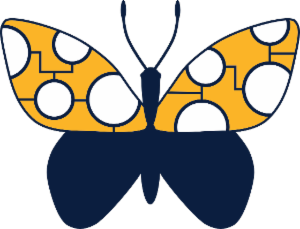Search for Himantura australis returned 159 results.
-
Biodiversity Science project: Arbuthnot St, Kelmscott Western Australia
Regular two monthly surveys.

-
Biodiversity Science project: Fungimap Australia
If you have seen interesting fungi in your neighborhood or backyard, submit the details and/or a photograph of the fungus on the Fungimap website. You will be contributing to the National Australian Fungimap Database - an important and unique collection of information about Australia's fungi - and facilitating research by professionals and citizen scientists alike...

-
Biodiversity Science project: The Feather Map of Australia project
The Feather Map of Australia project aims to collect waterbird feathers from wetlands around Australia. These feathers will be analysed using nuclear techniques, such as mass spectrometry and high resolution X-ray fluorescence, to identify stable isotopes and minerals that are incorporated into feathers through the ingestion of food. These analyses will identify the differences in feathers from diverse parts of Australia, creating a Feather Map...

-
Biodiversity Science project: MicroBlitz (Western Australia)
What exactly is MicroBlitz? MicroBlitz is a citizen science project where crowd-sourced science is building a state-wide map detailing the biodiversity and health of our environment using DNA sequencing to identify the biodiversity of microbes in our soils. Together, we’ll create a baseline map, a point of reference that can be shared and used to monitor, manage and protect WA’s precious environment into the future.

-
Biodiversity Science project: Lost fungi Australia
From a controlled list of uncommon fungi, this project encourages people to learn their local uncommon fungi, so when they go out seeking fungi they can also record the "lost" (absence) data which is important to support conservation efforts. This project will also record the "found" data for these uncommon fungi, which will allow a faster response when uncommon fungi are found...

-
Biodiversity Science project: EyeonWater Australia
Water colour is a very informative indicator of the ecological state of marine and fresh-waters. Until recently, only measurable with a suite of unwieldy instruments. Now these measurements can be mad by citizen scientist using a smart phone app and some other easy to deploy instrumentation...

-
Biodiversity Science project: Atlas of Living Australia
The Atlas of Living Australia (Atlas) contains information on all the known species in Australia aggregated from a wide range of data providers: museums, herbaria, community groups, government departments, individuals and universities. The Atlas was initiated by a group of 14 (now 17) organisations—our partners. The intent was to create a national database of all of Australia’s flora and fauna that could be accessed through a single, easy to use web site...

-
Biodiversity Science project: Butterflies Australia
Join us in our quest to learn more about Australia's butterflies. Despite being much-loved, butterflies haven't received a lot of attention in the past, and there are many basic things about them we don't know, like what the limits of many species ranges are, or whether they are declining. Download our free app and let us know what butterflies live in your area.

-
Biodiversity Science project: City Nature Challenge Redland City QLD Australia
This is a biobltiz-style event where we encourage everyone in or visiting the Redlands to go outside and document the flora, fauna and fungi around you - including in our wetlands, waterways and in Moreton Bay. If it's in Redland City Council LGA then we are counting it!

-
Biodiversity Science project: Climate History Australia
Understanding the past helps scientists estimate Australia’s vulnerability to continued climate change. Currently, our team is looking for volunteers to help create Australia’s longest daily weather record from a globally recognised climate change ‘hot spot’, Perth. The citizen science project will help scientists reconstruct Perth’s daily weather from 1830 to the present day.
